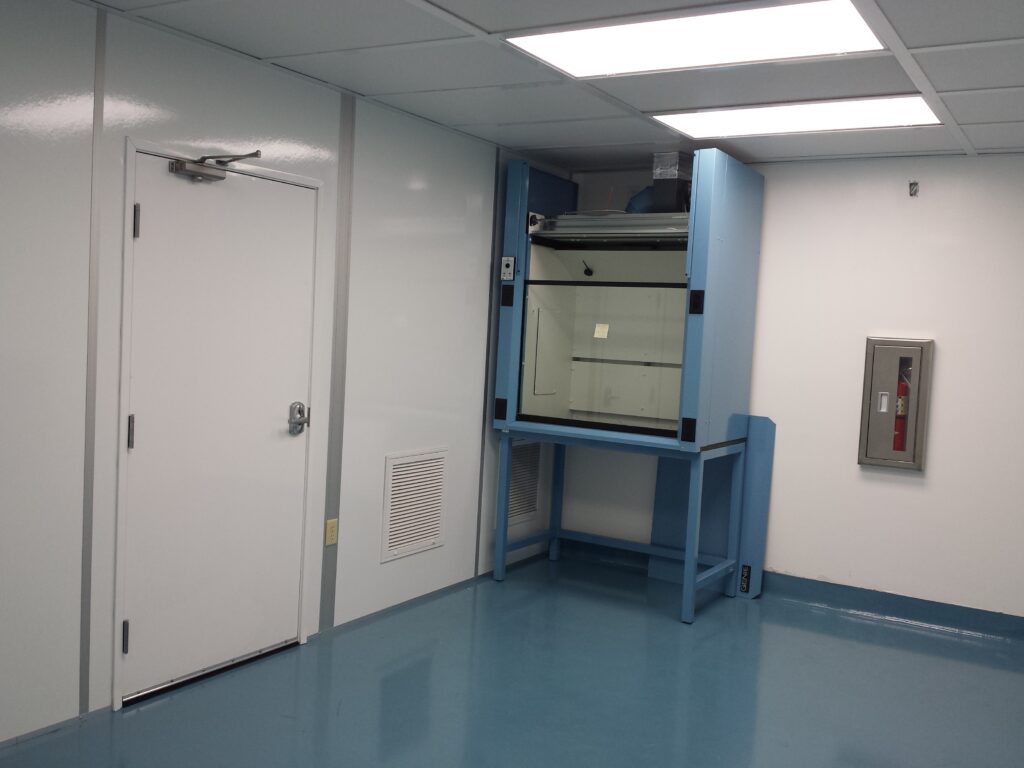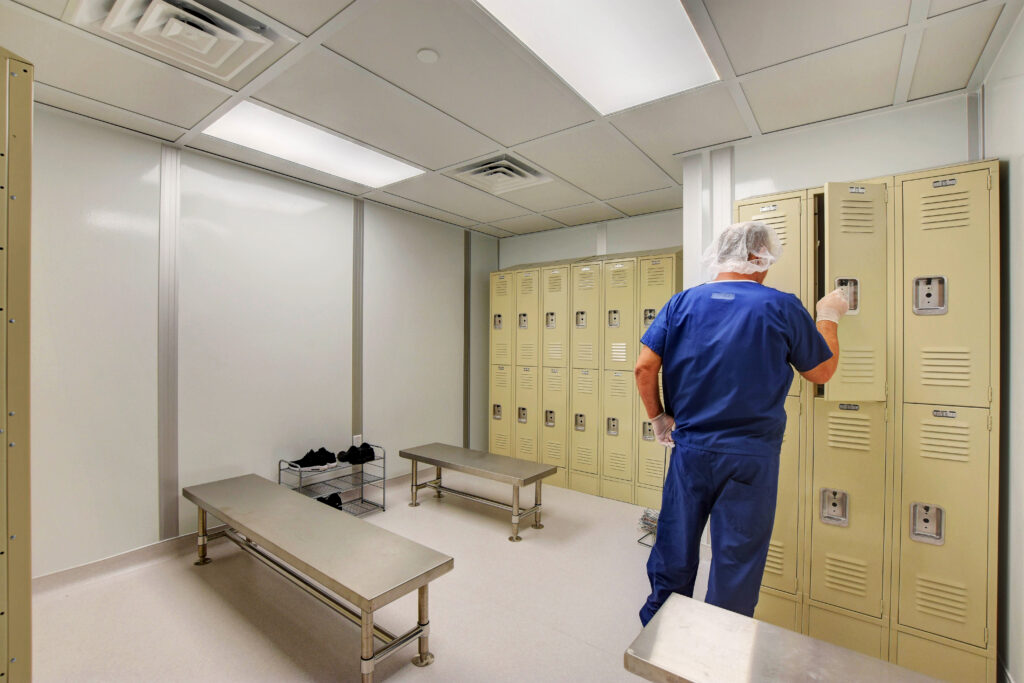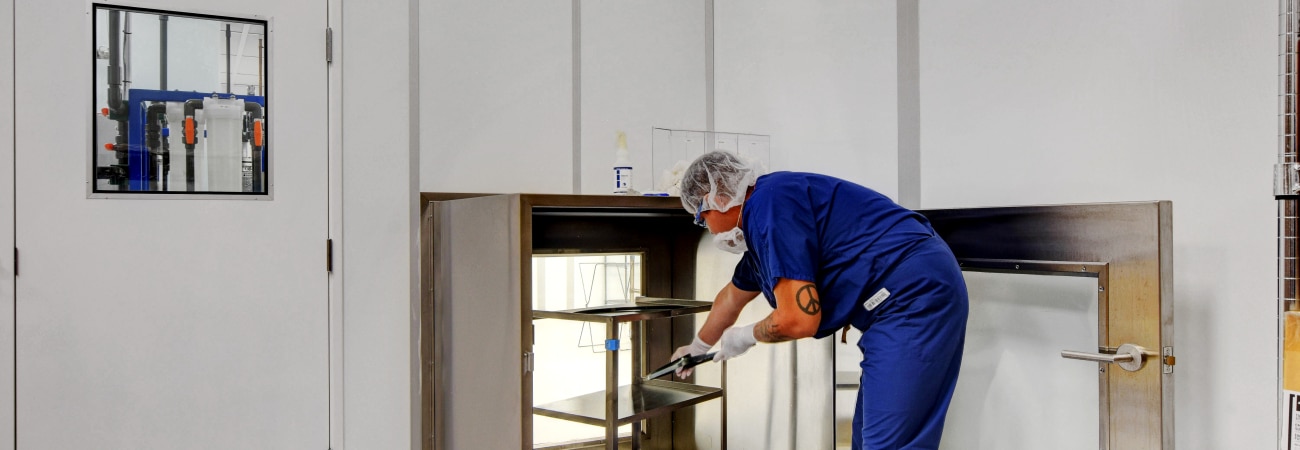Did you know that around 8 million healthcare workers are at risk of exposure to hazardous drugs? These risks can include infertility, birth defects, and even certain cancers. As a result, creating a safe environment for personnel is of the utmost importance. And this is exactly what USP 800 guidelines do. By setting strict requirements in cleanrooms, they protect healthcare staff, patients, and even the environment. In this article, we will cover the main parts of USP 800 cleanroom requirements and how they improve safety.
What is USP 800?
USP 800 is a set of standards created by the United States Pharmacopeia (USP) for handling hazardous drugs at many stages, including delivery, storage, preparation, dispensing, and administration. Hazardous medicines include those used in chemotherapy, immunosuppressants, bioengineered drugs, hormone therapies, and more. These guidelines protect healthcare workers, patients, and the environment from exposure to them.
USP 800 builds upon previous standards, such as USP 797, but instead focuses directly on hazardous drugs. It provides detailed requirements for cleanroom design, engineering controls, environmental monitoring, personnel safety, and more.
What are USP 800 Cleanroom Requirements?
As we mentioned, USP 800 sets guidelines to protect healthcare workers, patients, and the environment from hazardous drug exposure. These standards cover important areas like cleanroom design, engineering controls, environmental monitoring, and staff training.
Cleanroom Design
USP 800 cleanrooms are designed to prevent contamination from spreading to the wrong areas. Some key elements of their design include:
- Surfaces and Materials: These spaces must have smooth, non-porous, and non-shedding surfaces. Hazardous particles should not be able to accumulate in walls or hard-to-reach areas. As a result, walls, floors, and ceilings should be easy to clean. Also, such surfaces should be strong enough to withstand frequent cleaning and exposure to powerful cleaning supplies.
- Lighting and Noise Control: A sufficient amount of lighting needs to be present for safe operations, and noise should be minimized to make the environment safe and comfortable.
- Airflow Requirements: Controlled airflow prevents the spread of dangerous particles. To achieve this, cleanrooms use typically high-efficiency particulate air (HEPA) filters.
- Air Pressure: In USP 800 cleanrooms, air pressure differentials are very important. In general, positive pressure is used in buffer rooms, while negative pressure is used in containment areas. Negative pressure ensures that hazardous particles do not escape.
- Exterior Exhaust: In many cases, air must be exhausted outside without recirculation.

Engineering Controls
Engineering controls are physical barriers or equipment that help contain hazardous drugs. The following are the primary and secondary controls essential for reaching compliance:
- Primary Engineering Controls (PECs): These include Biological Safety Cabinets (BSCs) and Compounding Aseptic Containment Isolators (CACIs), which provide a controlled environment for handling hazardous drugs. PECs should be regularly tested to make sure they are functioning correctly.
- Secondary Engineering Controls (SECs): These include buffer rooms and anterooms, which act as barriers to containment rooms; they add another layer of safety, and the pressure differentials help airflow move back into the containment areas. SECs should also be tested regularly.

Environmental Monitoring
Regular environmental monitoring in USP 800 cleanrooms ensures that cleanrooms stay safe. Here are a few important aspects of monitoring to consider:
- Types of Monitoring: USP 800 requires monitoring of pressure differentials to make sure that hazardous drugs are properly contained. Additionally, while not mandatory, USP 800 recommends environmental monitoring for hazardous drug contamination through surface wipe sampling.
- Frequency and Methods: Pressure differential monitoring should occur at least daily. The frequency of other types of monitoring, such as surface wipe sampling for HD contamination, should be determined based on the facility’s risk factors.
- Record-Keeping: Detailed records of all monitoring activities should be kept, and any out-of-limit conditions should be fixed immediately.
Personnel Requirements
Proper training, equipment, and protocol are paramount in USP 800. Here are a few personnel requirements to keep cleanrooms safe:
- Training and Competency: All staff must receive regular training on safe handling procedures for hazardous drugs and the correct use of cleanroom equipment.
- PPE and Gowning: Personnel must wear appropriate personal protective equipment (PPE) such as gowns, gloves, and masks.
- Hygiene and Behavior: Strict protocols for hygiene and behavior must be followed to help minimize contamination.

Cleaning and Decontamination
Regular cleaning and decontamination are another important aspect of complying with USP 800 requirements. Here are a few important considerations.
- Routine Procedures: Cleanrooms must follow strict cleaning schedules.
- Cleaning Agents: Personnel must use appropriate cleaning agents to remove particles without causing damage to surfaces.
- Decontamination Processes: In case of spills or accidents, immediate decontamination procedures must be followed.
- Documentation: All cleaning and decontamination activities must be documented.
The Bottom Line
Following USP 800 cleanroom requirements is important to any operation that handles hazardous drugs. These guidelines improve safety for healthcare workers, patients, as well as the environment. By following such standards, healthcare facilities can ensure regulatory compliance, reduce health risks, and create a culture of safety and peace of mind among staff.






